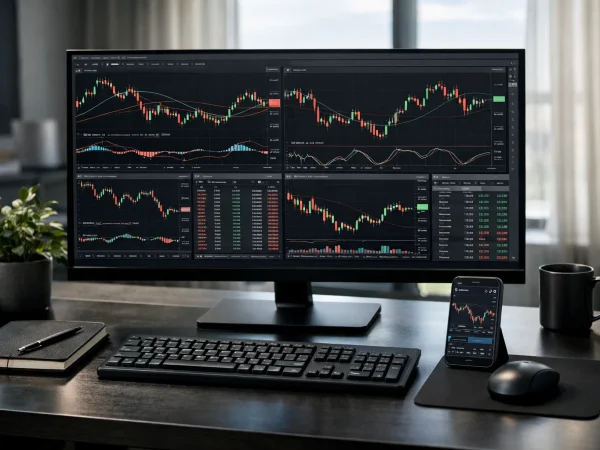
How Office Layouts Influence Team Collaboration and Output?
Your office layout isn’t just about aesthetics. It’s quietly influencing how your team collaborates, communicates and performs on a daily basis. Most business leaders see office design as purely superficial… Brush up for more.
Here’s the real deal: The way you arrange your workspace can seriously affect your team’s productivity levels.
What you’ll discover:
- Why Traditional Office Layouts Kill Collaboration
- The Open Office Myth That’s Costing You Money
- How Smart Layout Choices Boost Team Performance
- The Perfect Blend of Privacy and Collaboration
Why Traditional Office Layouts Kill Collaboration?

Want to know the biggest collaboration killer in today’s offices? It’s not what you think.
Most people blame technology or lack of communication skills. But the real villain here is sitting right under your nose: your office layout.
Cubicle farms and closed-door offices breed isolation between team members. If employees can’t see each other, they’re less likely to engage in spontaneous conversations that spark creativity.
Here’s what goes down: Important discussions are delayed. Team members operate in silos. And your entire organization starts to feel disconnected.
Research backs this up. Colleagues on the same team are six times more likely to communicate when they’re on the same floor. Different teams? Nine times more likely to engage when they share the same space. Proximity matters.
The Open Office Myth That’s Costing You Money
Open offices were marketed as the holy grail of collaboration. Promising more teamwork, better communication and skyrocketing innovation.
But here’s the kicker: The studies paint a completely different picture.
Take this Harvard research where they tracked workers before and after their office opened up. Guess what they found…
Face-to-face interactions plummeted by a whopping 70%. Instead of chatting more, employees resorted to emails and instant messaging each other, even when they were seated just a few feet apart. Why? Simple.
Open offices create a paradox. While they remove physical barriers, they generate psychological ones. Feeling constantly observed, employees lose the privacy needed for more meaningful conversations.
Sound expert Julian Treasure sums it up nicely: workers in open offices are 66% less productive than when they’re in private spaces. That’s not collaboration. That’s chaos.
How Office Layouts Influence Team Collaboration and Performance?
So, what’s the solution? Going back to cubicles or clinging to open plans. Neither.
It’s about creating zones that serve different purposes. The latest BT Office workplace furniture and workplace productivity research shows that effective office spaces combine different working environments.
Picture this: Your team needs various spaces for different kinds of work.
Sometimes they need to come together and collaborate intensively. Other times, they require focus and concentration without distraction. And occasionally, they need room to recharge and think creatively. Smart office layouts offer all three.
Collaboration Zones
Areas designed for teamwork and joint problem-solving. Open spaces with comfortable seating, writable walls, and easy access to tech. Flexible zones where spontaneous meetings can occur.
Focus Zones
Private or semi-private spots where employees can deep-dive into complex tasks without being disturbed. Quiet, well-lit areas with minimal visual distractions.
Rejuvenation Zones
Comfortable spaces with lots of natural light, plants, and relaxed seating. Zones where creativity and informal problem-solving can thrive.
The Science Behind Effective Workplace Design

Fun fact most business leaders don’t know… Your office layout directly impacts your bottom line. Companies with more collaborative workspaces report a 25% rise in individual productivity.
Well-designed offices lower stress, boost job satisfaction, and cut employee turnover. When people feel comfortable, they stay engaged and contribute more meaningfully toward team goals.
The Noise Factor
One of the main issues with traditional open offices is noise pollution. Constant interruptions kill concentration and creativity.
Solution? Acoustic zones. Use sound-absorbing materials, clever furniture placement and designated quiet zones.
Privacy Paradox
Employees need a mix of collaboration and privacy to perform at their best. Effective layouts give employees this control with moveable partitions, varied seating options and multiple workspace types.
Creating the Perfect Blend
The best office layouts aren’t cookie-cutter solutions. They’re carefully crafted ecosystems that support different work styles and tasks.
Some employees excel in open, collaborative settings. Others need quiet, private spaces to do their best work.
Your job is to provide both. Start by watching how your team naturally works. Where do they cluster? Which spaces do they avoid? Use these observations to guide your design choices.
Tech Integration
Modern collaboration requires seamless technology integration. Your layout should support both in-person and virtual collaboration with strategically placed screens, reliable wifi and flexible furniture.
Flexibility First
The most successful office layouts are adaptable. Opt for furniture that can easily be rearranged and spaces that can serve multiple functions.
Here’s why… Your business will evolve. Your office layout should too.
The Real Impact on Team Dynamics
When you get your office layout right, something magic happens. Teams start collaborating naturally. Communication improves. Innovation soars. And productivity skyrockets.
It’s not just about work efficiency, it’s about creating an environment where people genuinely want to contribute to something greater than themselves.
Building Company Culture
Your office layout is a tangible reflection of your company culture. Open, flexible spaces signal trust and collaboration. Rigid layouts reinforce traditional hierarchies.
Take a look at your current layout. What message does it send? Does it match your company values?
Supporting Different Work Styles
The modern workforce has diverse preferences for how they do their best work. Some prefer collaborative spaces. Others gravitate towards private offices. The key is offering options that cater to everyone’s needs.
Measuring Your Layout’s Success

How do you know if your office layout is actually working?
Look beyond aesthetics and dig into real, measurable outcomes. Are projects getting done faster? Is employee satisfaction climbing? Do you see more cross-departmental collaboration?
Track these metrics before and after making layout changes to see the tangible impact.
Employee Feedback
The best insights come from the people using your space every day. Conduct regular surveys and have conversations to uncover pain points you may have missed.
Don’t assume you know what works, ask your team what they need to do their best work.
Wrapping It All Together
Your office layout isn’t just about making your space look professional.
It’s a strategic tool you can use to massively improve team collaboration, supercharge productivity and create a culture where innovation thrives. Research clearly shows well-designed workspaces have a direct impact on business performance.
Businesses that understand this will gain a major competitive edge. Those that ignore it will continue to struggle with communication issues and employee disengagement. The choice is yours.
Start by assessing your current layout against your team’s real needs. Make strategic improvements and measure their impact. Then build on what works.
Remember: The perfect office layout isn’t about following trends. It’s about creating an environment where your specific team can do their best work.
That’s how you turn your office from just another workspace into a real strategic advantage.





